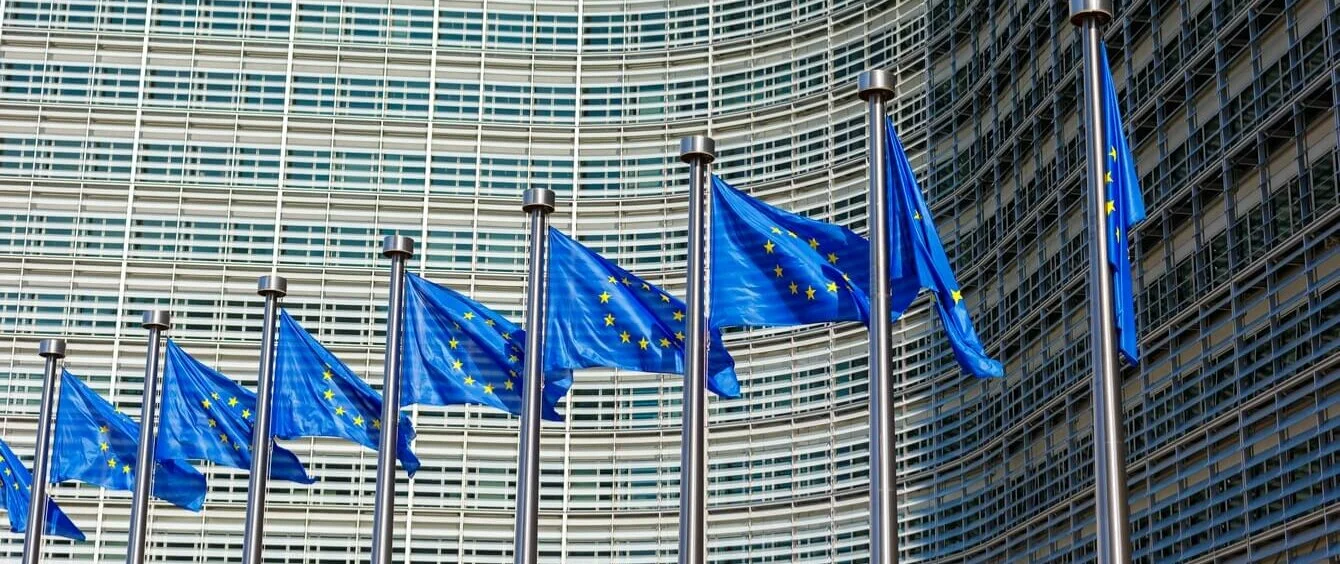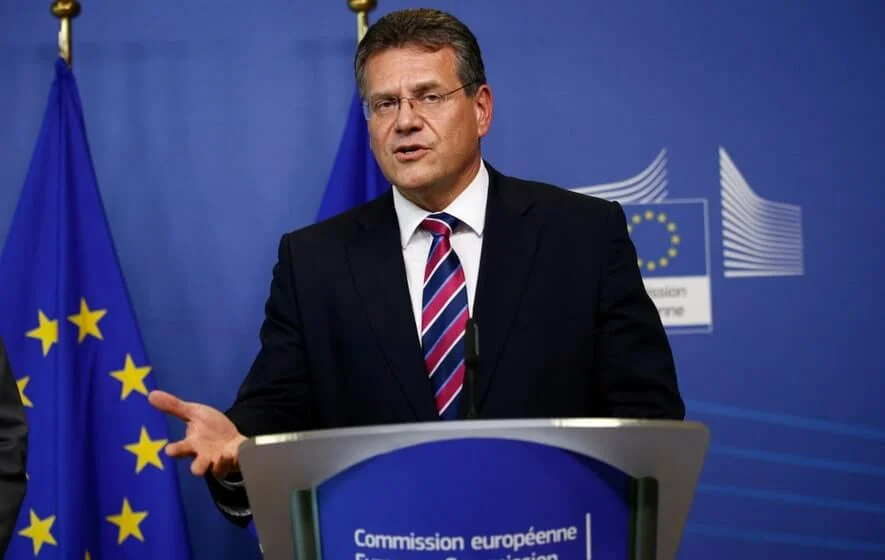The EU will be electing a new parliament from 23 May to 26 May and the chosen MEPs will play a central part in appointing the new EU Commission. During the current legislative period, headed by Jean-Claude Juncker as President, the European Commission has made the Energy Union a priority – and it will remain just as important for the current election campaign. We have answered four questions on the Energy Union.
What is the Energy Union?
‘Energy Union and Climate’ is one of ten issues which were prioritised by the EU Commission under President Jean-Clause Juncker. One of the six Vice Presidents together with other members from various departments of the European Commission are tasked with implementing these priorities.
‘Energy Union and Climate’, as this policy area is often referred to, is headed by the Vice President of the Commission, Maroš Šefčovič. The team includes 13 other EU Commissioners, including Energy and Climate Commissioner Miguel Arias Cañete, Environment Commissioner Karmenu Vella and Violeta Bulc, Commissioner for Mobility and Transport. The Energy Union sees its goal as being: “Making energy more secure, affordable and sustainable.”
What exactly does the Energy Union do?
The Energy Union divides its work into five policy areas, which it refers to as dimensions, and all five are closely related. Two examples: an efficient infrastructure supports the dimensions of security of supply, a fully integrated internal energy market and climate action. Similarly, energy efficiency (which has been given its own dimension) promotes both climate action as well as security of supply, as the EU will become less dependent on imports as a result.
The five dimensions of the ‘Energy Union and Climate’ in the EU
Security of supply is literally the first port of call. EU member states import energy to meet more than half of their total demand from a select number of non-member countries. In addition to diversifying suppliers – for example through joint pipeline projects – the Energy Union wants to create an efficient infrastructure within the EU in order to avoid regional shortages caused by energy sourced from other member states.
Technical and regulatory barriers are to be further removed. In addition to efficient transport routes such as gas and electricity networks, this dimension is also tasked with encouraging market standardisation. The goal of the Energy Union is to strengthen cross-border competition among energy companies and thus put households and business consumers at the heart of the European energy market.
Improved energy efficiency not only protects infrastructure and the environment, it also reduces dependence on imports. Despite great progress in recent decades, the European Commission sees a need for further improvement – especially when it comes to the building sector. In order to achieve this goal, the Commission is relying heavily on a two-pronged approach: transparency of energy demand and promotion of climate-friendly energy sources for heating and cooling buildings.
This is how the European Commission describes the ‘Energy efficiency’ dimension of the Energy Union.
Member states are to tackle the Paris climate targets together within ‘Energy Union and Climate’. The most important cornerstone of climate policy to date is probably the EU Emissions Trading System (EU ETS) but the European Commission is also coordinating national initiatives to reduce greenhouse gas emissions. Member states with high per-capita income have more ambitious targets than less affluent countries. In addition, the Commission also wants to advocate more aggressive climate action on a global level.
Powerful energy storage systems, cutting costs for renewable energy generation and new concepts for ways in which to use energy efficiently – in smart cities for example – are to support the Energy Union. Research into nuclear fusion as an energy source is also being promoted. The aim: A low-carbon and competitive EU.
How is the Energy Union progressing?
The integration of energy markets and networks in the EU is coming along nicely. International research projects such as the European Battery Alliance have been put into action and many member states have ratified national laws on energy efficiency and climate protection. When the European Commission presented its fourth and final report on the state of the Energy Union in April 2019, Maroš Šefčovič and Miguel Arias Cañete declared the Energy Union to be “complete”. And yet, at the same time, the report highlights that there is still a long way to go for the Energy Union following the election of the new European Parliament. The Commission estimates that 180 billion euros would have to be invested year upon year in order for the EU to hit its climate and energy targets by 2030.
How important is the Energy Union to security of supply in Europe?
A secure supply of energy is one of the linchpins of prosperity. The easier it is to transport energy to where it is needed – even within the EU – the stronger the security of supply and the more consumers benefit from competition between companies. Diversification of energy sources also reduces the risk of shortages. The same applies to the import of fossil fuels such as oil and gas but also to renewable energy: the more it contributes to the energy mix, the more important it becomes to source the energy from as many sources as possible. This means, for example, that wind energy from the Bay of Biscay or solar power from Spain can compensate for shortages in the North Sea. This is precisely why the Energy Union is becoming increasingly relevant as the EU draws ever closer to its climate targets.
Photo credits: sashk0, shutterstock.com

